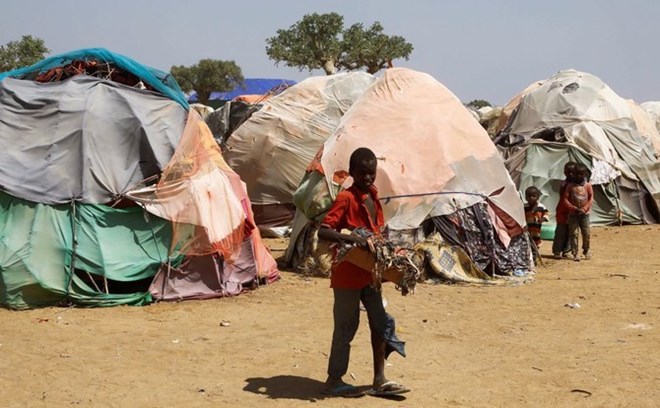
Wednesday March 1, 2023
By CARA ANNA
Food security experts say life remains “extremely critical” for more than 6 million hungry people in Somalia’s historic drought, but they no longer project famine for the worst-hit population of nearly a quarter-million people between April and June

Somali children are seen within the Iftin Camp for the internally displaced people outside Baradere town, Gedo Region, Jubaland state, Somalia. (Reuters/File)
NAIROBI, Kenya -- Food security experts say life remains “extremely critical” for more than 6 million hungry people in Somalia’s historic drought, but they no longer project famine for the worst-hit population of nearly a quarter-million people between April and June.
The latest assessment released Tuesday by United Nations and partner organizations notes “very high mortality rates” in the worst-affected populations which include people who have fled to the capital, Mogadishu, and the southwestern city of Baidoa. It did not give details, and officials didn't immediately respond.
advertisements
The assessment only slightly eases the warnings of acute food insecurity as the Horn of Africa faces the possibility of a sixth straight failed rainy season in the weeks ahead. Some humanitarian and climate officials in recent weeks have warned that trends are worse than in the 2011 famine in Somalia in which a quarter-million people died.Millions of livestock have died in the current crisis compounded by climate change and insecurity as Somalia battles thousands of fighters with al-Qaida’s East Africa affiliate, al-Shabab. The U.N. migration agency says 3.8 million people are displaced, a record high.
The new food security assessment says nearly a half-million children in Somalia are likely to be severely malnourished this year.
The previous assessment released in December had projected famine for the people displaced to Mogadishu and Baidoa along with rural communities in Baidoa and Burhakaba districts. But the new assessment says more humanitarian aid and slightly better forecasts for the rainy season ahead “will likely contribute to a slight alleviation of the food insecurity and acute malnutrition conditions, including improved access to water.”
That depends, however, on the rainfall and whether aid can reach the most vulnerable people, the assessment says.
Famine is the extreme lack of food and a significant death rate from outright starvation or malnutrition combined with diseases like cholera. A formal famine declaration means data shows more than a fifth of households have extreme food gaps, more than 30% of children are acutely malnourished and over two people out of 10,000 are dying every day.